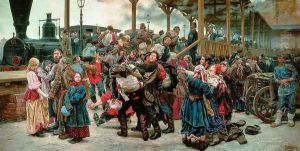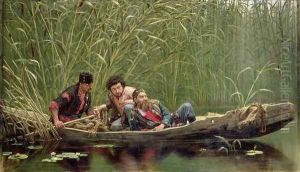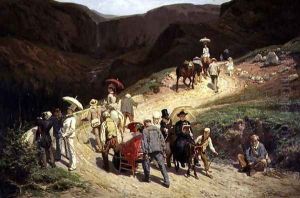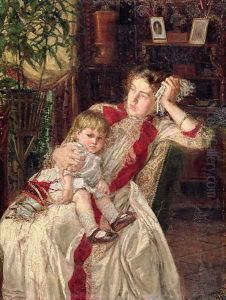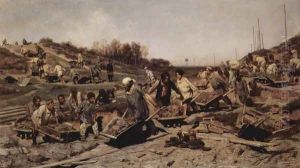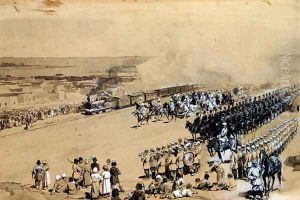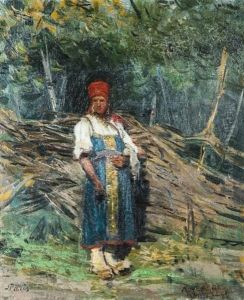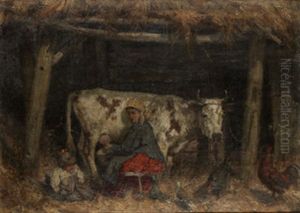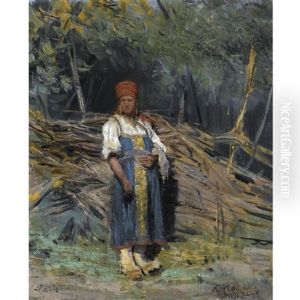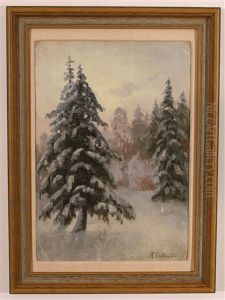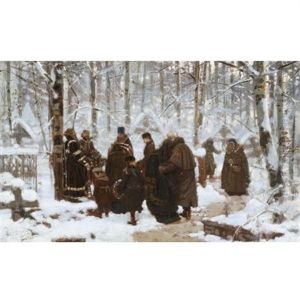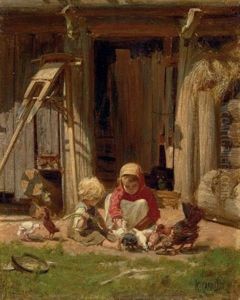Konstantin Apollonovich Savitsky Paintings
Konstantin Apollonovich Savitsky was a Russian realist painter born on June 6, 1844, in the city of Taganrog at the north shore of the Sea of Azov. His initial education was in the areas of mathematics and navigation, which he studied at the Taganrog Gymnasium. However, his artistic talent began to emerge early, and he eventually shifted his focus to pursue a career in art. In 1862, Savitsky entered the Russian Academy of Arts in Saint Petersburg, where he studied under the tutelage of famous Russian painters such as Alexei Tarasovich Markov and later with Pavel Chistyakov.
During his education, Savitsky was awarded several medals for his work, including a major silver medal in 1865 for his painting 'Curing of the Blind'. His academic excellence and artistic prowess earned him a scholarship to study abroad, which he utilized to travel and work in France, Germany, and Italy, further refining his skills and aesthetic sensibility. In 1871, Savitsky returned to Russia and became a member of the Peredvizhniki (Wanderers or Itinerants), a cooperative of Russian realist artists who sought to break away from the strict academic constraints of the time and engage with more socially-relevant subjects in their art.
Savitsky was known for his genre scenes, historical paintings, and his interest in capturing the lives of the Russian peasantry with sincerity and empathy. His works often depicted the hardships and joys of rural life, aiming to elevate these everyday scenes to a higher artistic status. Among his notable works are 'Repairing the Railroad' (1874), which reflects his interest in the industrialization of Russia, and 'An Unequal Marriage' (1883), which addresses social issues with a narrative approach. Savitsky's style was characterized by its detailed realism, expressive characters, and often, a sense of narrative drama.
Throughout his career, Savitsky also worked as a teacher and mentor to younger artists. He taught at the Moscow School of Painting, Sculpture and Architecture, where he influenced a new generation of Russian painters. His impact on Russian art extended beyond his own canvases, as he helped shape the values and direction of the realist movement in Russia.
Konstantin Apollonovich Savitsky passed away on February 13, 1905, in Penza, where he had lived for the latter part of his life. Today, his works can be found in various museums and collections across Russia, and they continue to be celebrated for their technical mastery and poignant engagement with the social realities of his time.

